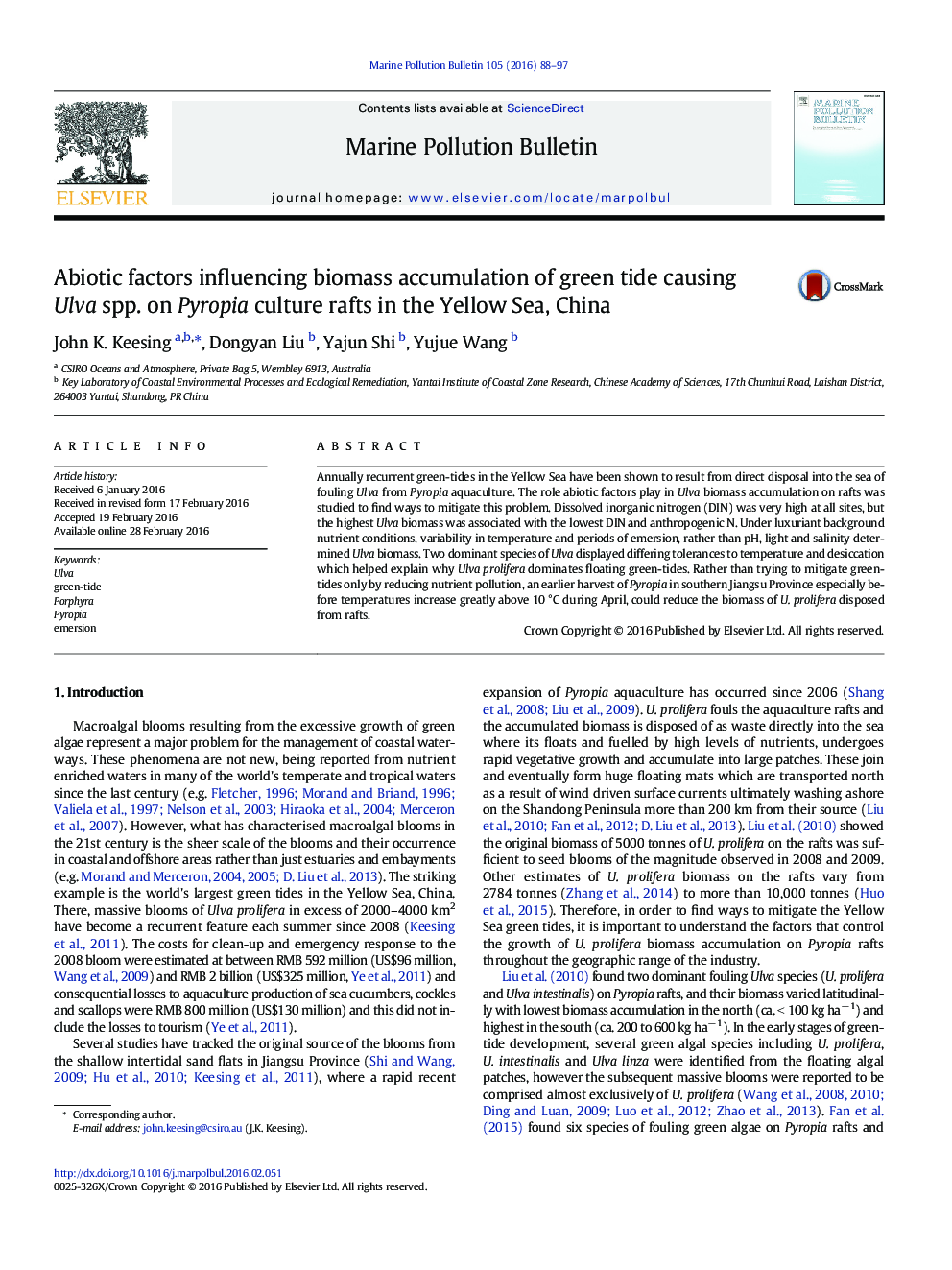| Article ID | Journal | Published Year | Pages | File Type |
|---|---|---|---|---|
| 4476519 | Marine Pollution Bulletin | 2016 | 10 Pages |
•Pyropia culture rafts in the high nutrient coastal waters of the Yellow Sea are fouled with a high biomass of Ulva species•Temperature and period of emersion are primary determinants of Ulva biomass accumulation on Pyropia rafts•Higher biomass of U. prolifera relative to U. cf. intestinalis is due to the former being more tolerant to desiccation•Pyropia harvest before the temperature rises above 10 °C would significantly reduce the amount of Ulva disposed of in the sea•This measure may help mitigate the severity of Yellow Sea green tides by reducing the initial biomass of the Ulva blooms
Annually recurrent green-tides in the Yellow Sea have been shown to result from direct disposal into the sea of fouling Ulva from Pyropia aquaculture. The role abiotic factors play in Ulva biomass accumulation on rafts was studied to find ways to mitigate this problem. Dissolved inorganic nitrogen (DIN) was very high at all sites, but the highest Ulva biomass was associated with the lowest DIN and anthropogenic N. Under luxuriant background nutrient conditions, variability in temperature and periods of emersion, rather than pH, light and salinity determined Ulva biomass. Two dominant species of Ulva displayed differing tolerances to temperature and desiccation which helped explain why Ulva prolifera dominates floating green-tides. Rather than trying to mitigate green-tides only by reducing nutrient pollution, an earlier harvest of Pyropia in southern Jiangsu Province especially before temperatures increase greatly above 10 °C during April, could reduce the biomass of U. prolifera disposed from rafts.
